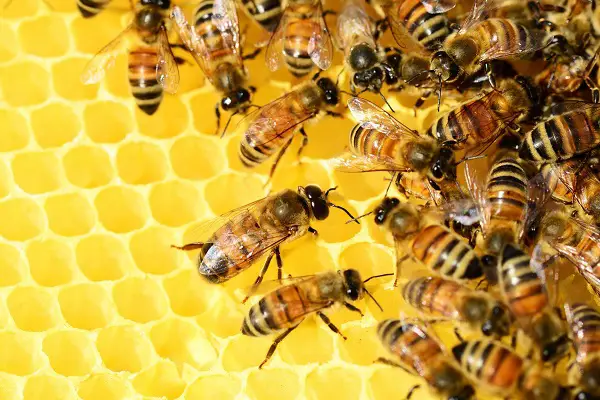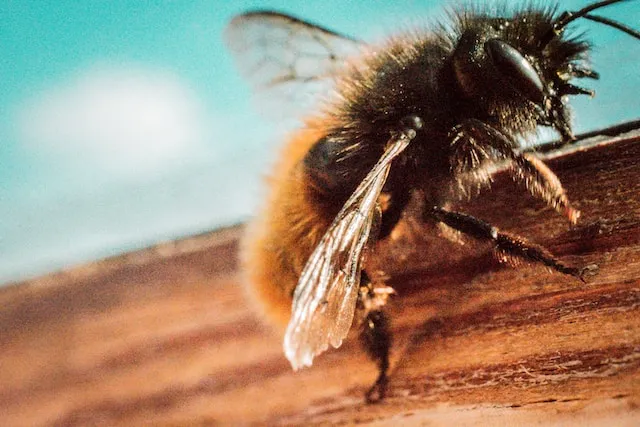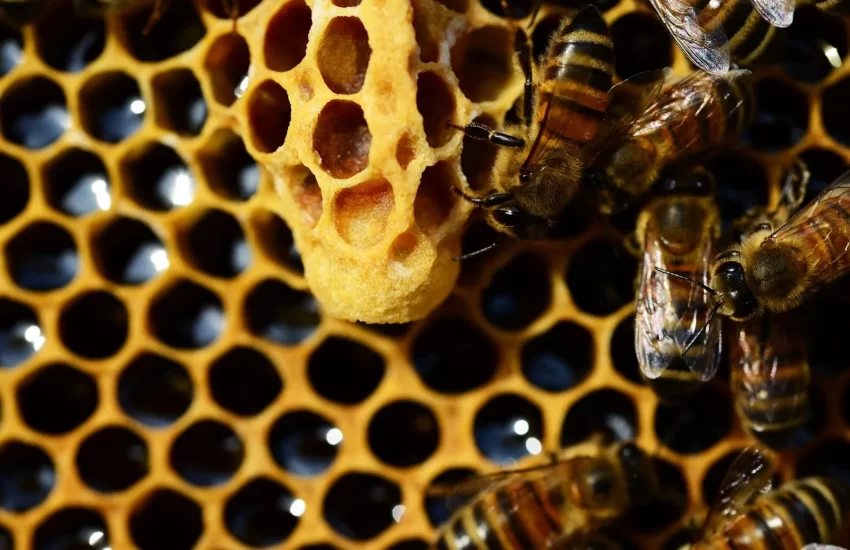What do bees do with honey?
Most of us know bees for their delicious honey. Not only is it tasty, but it is also loaded nutrients and minerals that have many health benefits. The honey-making process is complex and requires teamwork among the worker bees.
What do bees do with honey?
Honey bees make honey from nectar and store in honeycombs. It is the sole source of carbohydrates for their colony. They also keep reserves to use in the cold seasons or when there is nectar shortage. The nectar they collect has high moisture content and cannot be stored; hence they convert it into more honey that can be stored for a long period of time. Lowering the moisture content inhibits the growth of bacteria and other micro-organisms.
Honey is also necessary for the growth and development of larvae. The nurse bees mix honey and pollen to make bee bread that is fed to the larvae. Although the highest percentage of bee bread is pollen (about 75%), they also add some honey to the mixture. Fresh pollen is highly perishable and hard to digest for the young bees.
Similar Articles you may like to read –
What do bees do with pollen?
How Do Bees Make Wax?
What kills honey bees?
Do Honey Bees Stay In The Same Nest Every Year?
Are queen bees born or made?
How do bees make honey?

Here are the stages involved in making honey.
Collecting Nectar
Nectar is the raw material for making honey. This is a sugary substance that is secreted from the nectaries of flowers. The worker bees travel up to 5 miles, searching for nectar for their colony. They store it in a special sac referred to as the honey stomach. The honey sac can store up to 70 mg of honey. An enzyme in the bee’s stomach( glucose oxidase) and invertase breaks down the nectar into simpler sugars. In a single trip, a forager may visit up to 100 flowers. Once the honey sac is complete, they ferry it back to the hive and pass it to the house bees.
Passing it to House Bees
In the hive, the foragers pass the nectar to the house bees. The bees chew it for about 30 minutes as they pass it from one bee to another. During the chewing process, the bees add enzymes to the mixture, which aids in breaking it down further. The chemical composition and the PH are also changed.
Dehydration
The initial moisture content of nectar is about 90%. As it is passed from bee to bee, the honey loses some moisture, but now they have to bring it down to 18%. The bees spread it on the honeycomb to increase the surface area for evaporation. They also increase the airflow in the hive by fanning the wings, increasing the evaporation rate of water from the honey.
Storing
Once the honey attains the proper moisture content, the bees deposit it in honeycomb cells. It stays in these cells until the bees are ready to use it. Each cell is sealed or capped with beeswax to keep the honey clean since there are thousands of bees passing across the faces of the honeycombs.it also prevents the honey from absorbing the moisture that could cause it to ferment.
Is it right for beekeepers to steal honey from bees?
A healthy colony produces more honey than it can consume. There is no problem with a beekeeper harvesting honey from a hive as long as there are enough reserves for the bees to use in winter. A lot of honey stores can also cause overcrowding in the hive. However, some commercial beekeepers take significant amounts of honey and replace it with sugar syrup for bees to eat.
If honey is never harvested, a hive can also become honey bound, whereby the bees fill every available space with honey, especially during a nectar flow. They may even leave no room for the queen to lay eggs. This may cause a colony to die out. Extracting honey and giving them back creates space for them.
Various Types of Honey

There are approximately 300 available varieties of honey. These depend on the nectar source. The source also will determine the taste, texture, aroma, and color of honey. Honey that is made from a single species of flowers is called monofloral honey, while honey made from nectar from different species is known as multifloral honey. Some of the most popular types include clover honey, acacia honey, alfalfa honey, buckwheat honey, manuka honey, and orange blossom honey.
What Amount of Honey can a single colony produce in a season?
The amount of honey produced by a colony in a season varies from year to year, depending on the hive’s health, nectar availability, and weather conditions. A healthy hive can produce up to 200 pounds of honey in a season.
FAQs
Are all types of honey made with nectar?
Not all types of honey are made with nectar. When there is a nectar shortage, some bees may collect honeydew secreted by aphids that feed on the plant’s sap.
Do queen bees consume honey?
Queen bees feed on royal jelly exclusively. It is secreted by young worker bees from special glands located on their hands.
Do bees eat their honey?
Yes, all types of bee species then make honey consume honey including honey bees.
More articles you may like to read –
How quickly do bees multiply? Reproduction of Honey Bees
How Many Times Does A Queen Bee Get Mated?
What Color Bees Cannot Recognize?
What Is The Biggest Problem For Bees? Threats To Honeybees
What Temperature Is Too Cold For Bees?
Can you give back the bees’ honey that you harvested from them?
Yes, honey is the best food for honey bees. They will be happy to have it back, especially when there is a nectar shortage. If you have honey from your healthy hives, you can feed your colony. If from other sources, ensure it is free from contamination.
Do bees steal honey from other colonies?
Yes, they can steal honey from their hives. It is referred to as robbing.
Is honey bees vomit?
Basically, honey is not a bee’s vomit. They store the nectar they collect into a different stomach from the digestive stomach before transferring it to house bees.
How long does it take for bees to fill the hive with honey?
It can take a healthy hive about three days to a week can feel a 10-frame deep box with honey during a strong nectar flow.


